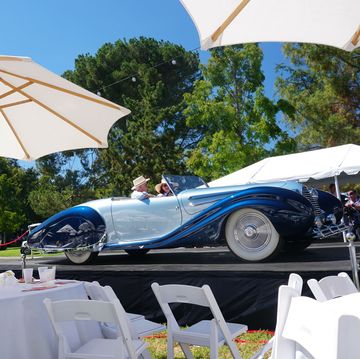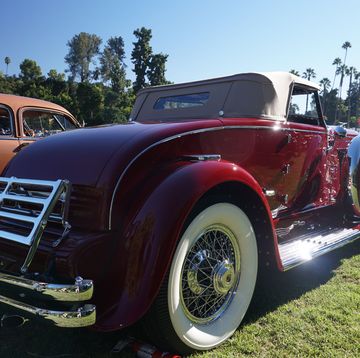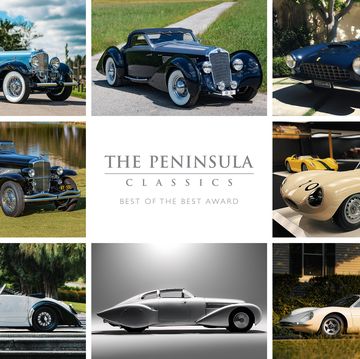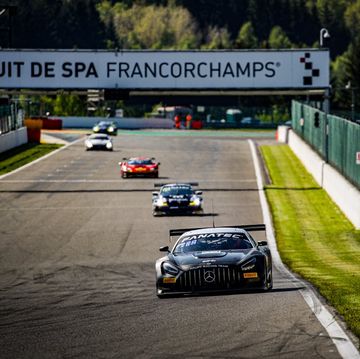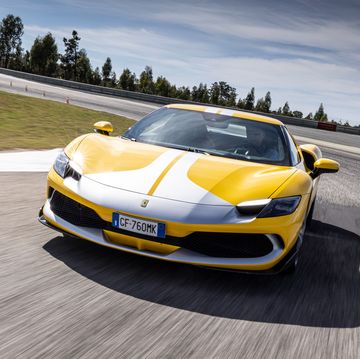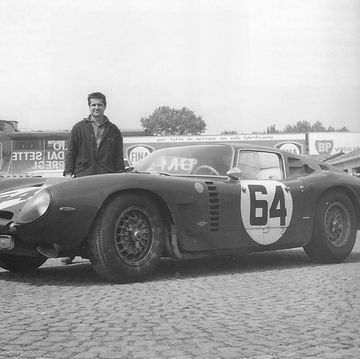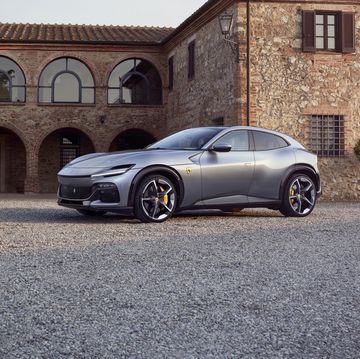When it was still in one piece and not a crumpled-up wad of burned metal, you could make a pretty good argument that the Ferrari 500 Mondial was worth $1.9 million. But the fact that some guy just paid almost 2 mill for what amounts to scrap metal shows the decline and fall of western civilization is now complete.
It had, after all, what they call in the auction world, “provenance.” Here are the attributes RM Sotheby’s listed in the catalog for its Monterey auction for this 500 Mondial:
- The second Mondial built; one of 13 examples originally completed with Pinin Farina spider coachwork
- Raced in 1954 by ex-Scuderia Ferrari team driver Franco Cortese, a driver famous for piloting the first Ferrari built to the marque’s first overall victory
- Period Italian racing career including appearances at the Mille Miglia, Targa Florio, and Imola Grand Prix
- Accompanied by a larger, 3.0-liter Tipo 119 Lampredi inline-four engine while retaining matching-numbers gearbox
- Documented with copies of factory build sheets and CSAI homologation papers
- Domiciled under current ownership for nearly 50 years; prime candidate for an intriguing restoration project
Notice how they say “domiciled” instead of “stored in a barn.” You want to read that kind of language if you’re about to drop almost two large on a “car.” Should have added, “Ran when crashed.”
Oy.
Defenders of the sale point to how you could use this car to run in the Mille Miglia, that modern recreation of the classic round-Italy race that defined motorsports in the early part of the 20th century.
And while that event now accepts racing greats from the past, like the following from this year’s Mille—23 Alfa 6Cs, three 8Cs, five Bugatti Type 37s, two Delahaye 135s, and more glorious Ferraris than you could shake an auction gavel at—you could also run the entire Mille Miglia in an Austin-Healey 100, and 16 of those ran in this year’s Mille.
(For the record, if I had any of the above cars, including a running Mondial, I would definitely run it in the Colorado Grand and the California Mille but, again, that could be accomplished for a lot less.)
You can also get it certified by Ferrari Classiche to ensure its provenance for future owners. But debating the value of Ferrari Classiche with real tifosi is like arguing religion at the Vatican, so go ahead and try.
But come on, man, has anyone even heard of Franco Cortese? However great a driver he was, for whatever reason he only finished 14th in the Mille Miglia, this car’s pre-crash peak of performance.
Later, the car finished fourth in the Bolzano-Mendola hillclimb. Anyone heard of that? Okay, you there in the back with the tricolore wig, yes, okay. How about Stanley Surridge? Anyone? Anyone? Bueller? It was Surridge, as near as we can tell, who crashed it. After that it was “domiciled” for almost 50 years. Is that “provenance?”
The average price for a running Ferrari 500 Mondial that isn’t a crumpled-up ball of burned steel has been about $3.8 million, according to classic.com. So for less than twice the cost of the ground-up flaming metal ball they sold here, you could have the same car and it would be running!
What is wrong with the world? God knows.




